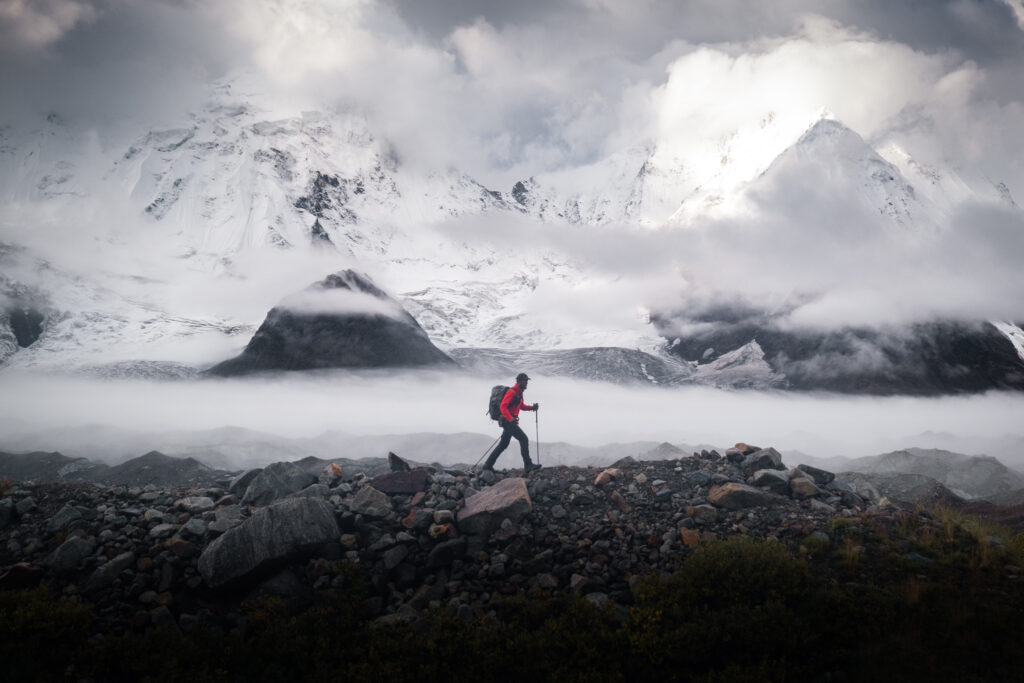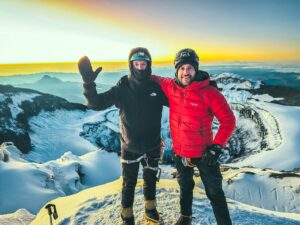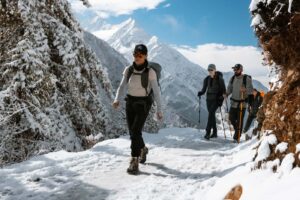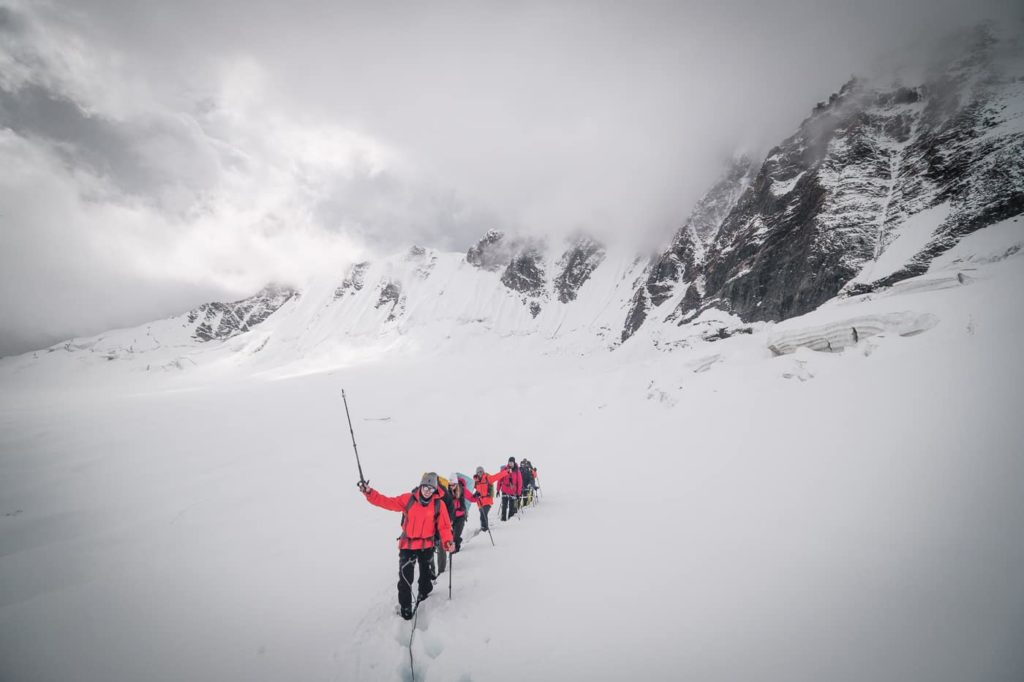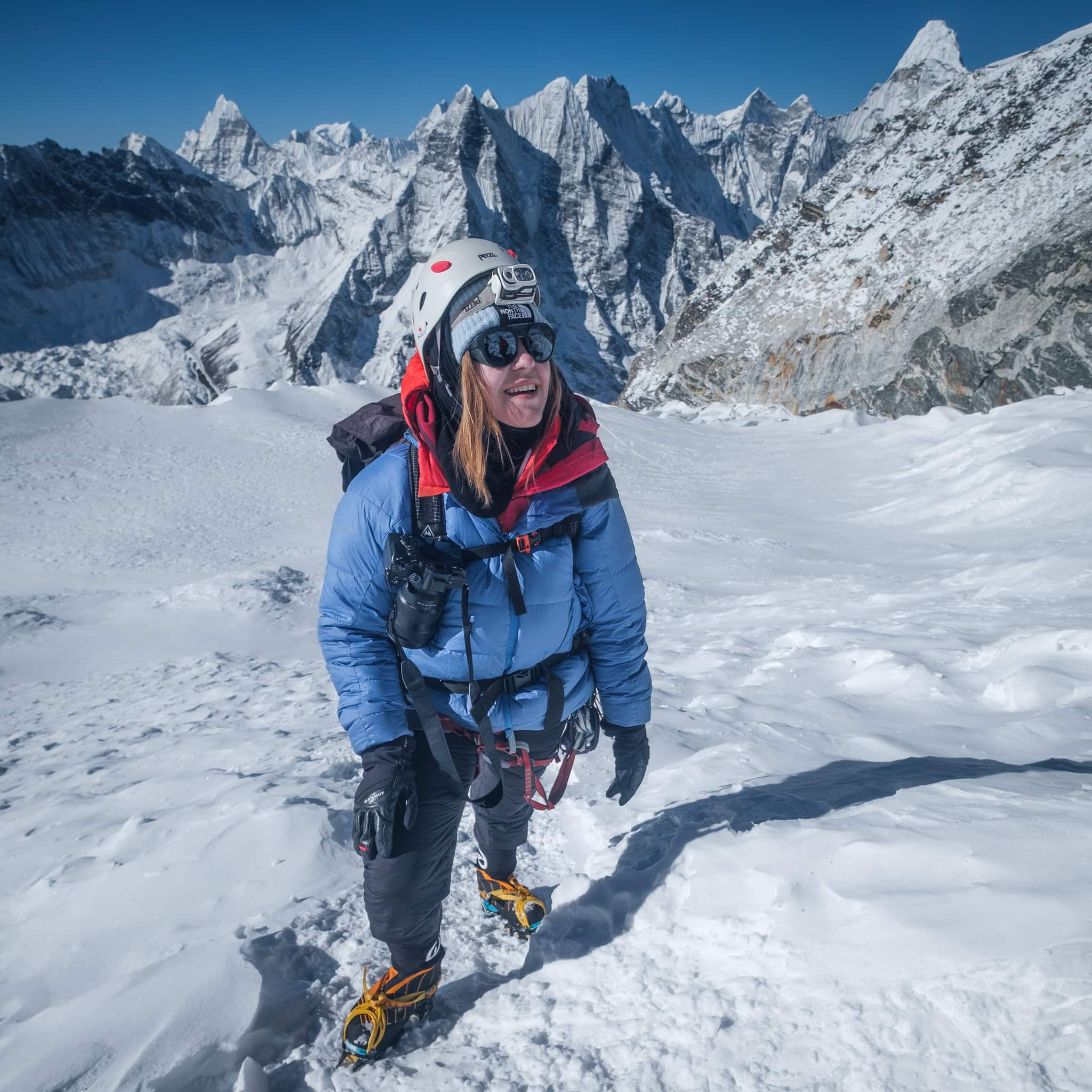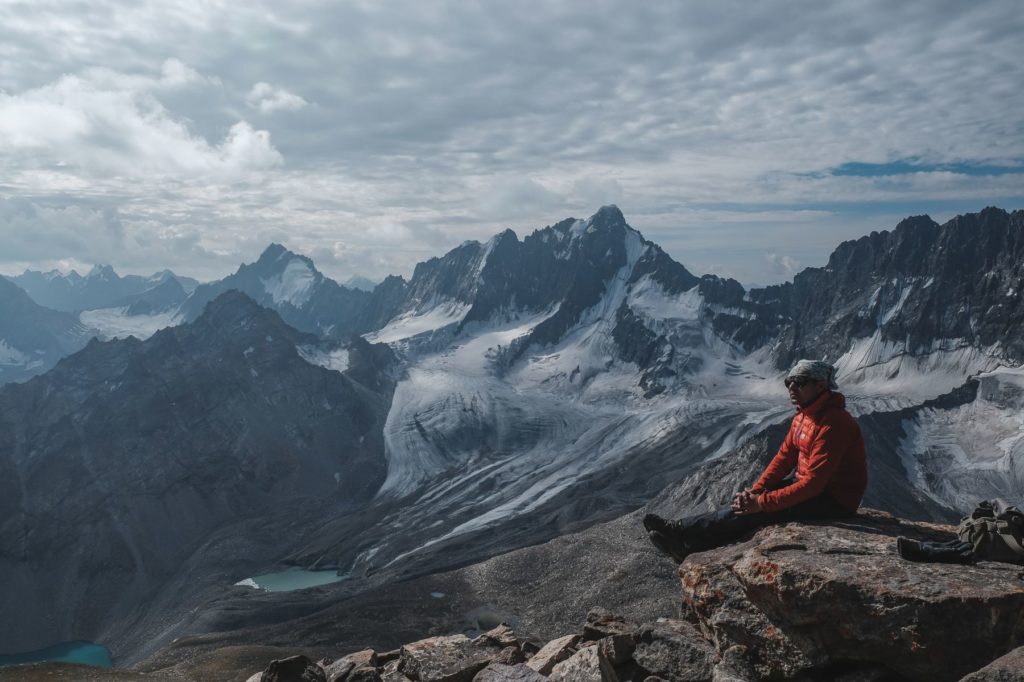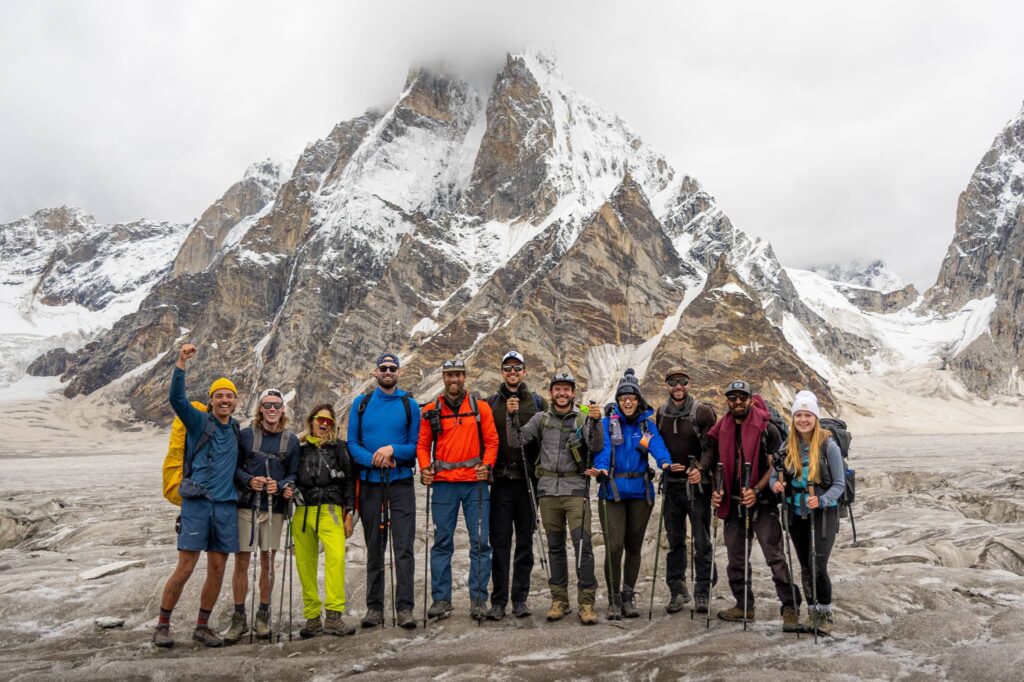As with anything in life, the preparation and training you put in to achieve a big goal will only benefit you when “go time” comes.
Preparing your body for the mountains is not something that can be achieved overnight. A simple, yet effective training program is all about consistency and what feels right for each person.
Whether you are preparing to join us for a big, multi-day trek like the K2 Base Camp Trek or climbing Island Peak, you can use this document as a guide to help you achieve your fitness goals and to ensure that when day one of the trip starts, you are in prime shape to take on the mountains.
Setting A Target Fitness Level
To achieve optimal trekking fitness, the goal is not to be in marathon shape or to be able to win a body-building contest. You want to be doing exercises that directly translate into trekking fitness and endurance versus being exceptionally strong or ready for an Ironman.
These are the core areas you should focus on in the months leading up to the trip:
- Leg and core strength training
- Cardio health
- Trail legs
- Endurance
- Pro-biotic/ gut health
The simple trekking fitness goal for our trips:
Hike at a comfortable pace, for 5-8 hours over 15-18 kilometers (9-11 miles) with 1000 meters (3280 feet) of elevation gain. You should feel appropriately tired after putting up trail numbers like that, but not so fatigued that you feel totally depleted and can’t do it again the next day.
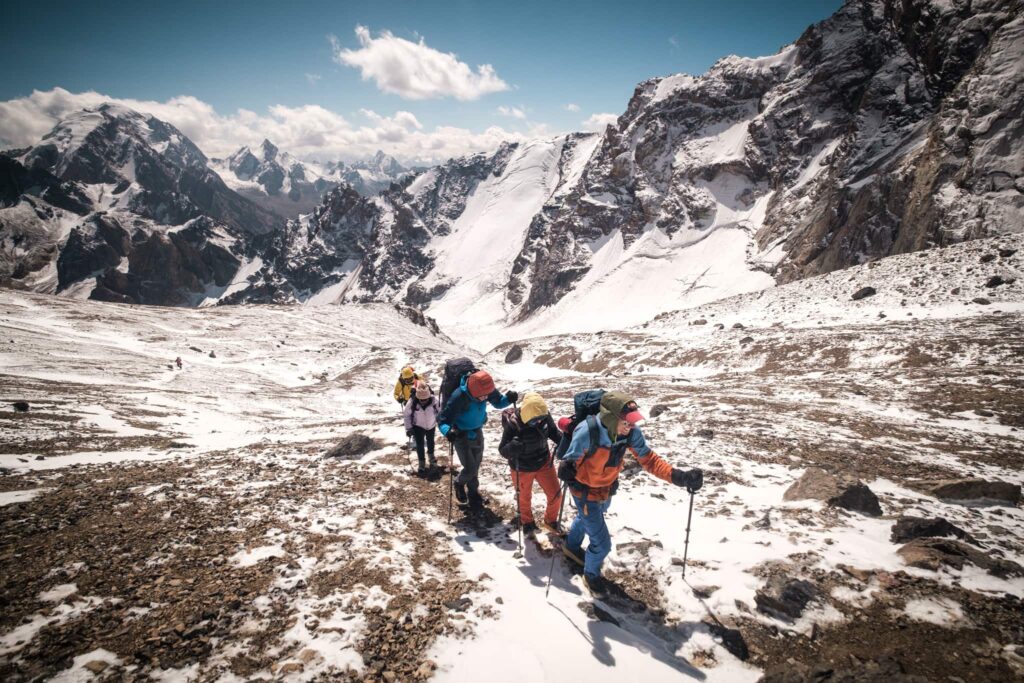
Log your Physical Activities
If you are above the 55-year-old age limit we have for some of our treks, then keeping track of your fitness is mandatory.
Keeping track of your workouts and hikes is a great way to track progress and also gives concrete proof that you are holding up your end of the bargain when it comes to arriving in prime shape for the trek in question.
For those Epic clients over 55 planning on joining us for the K2 Base Camp Trek or equivalent, please note the following:
- Use a phone application like Strava or Gaia GPS or a hiking watch to track your workouts and all hikes/walks.
- Starting 4 months before the start of the trip, please send us an email containing screenshots of your GPS data from hikes you have logged.
- You should log a minimum of 4 hikes or long walks per month.
Make sure that you consistently do hikes with some elevation gain and a minimum distance of 10 kilometers (6 miles).
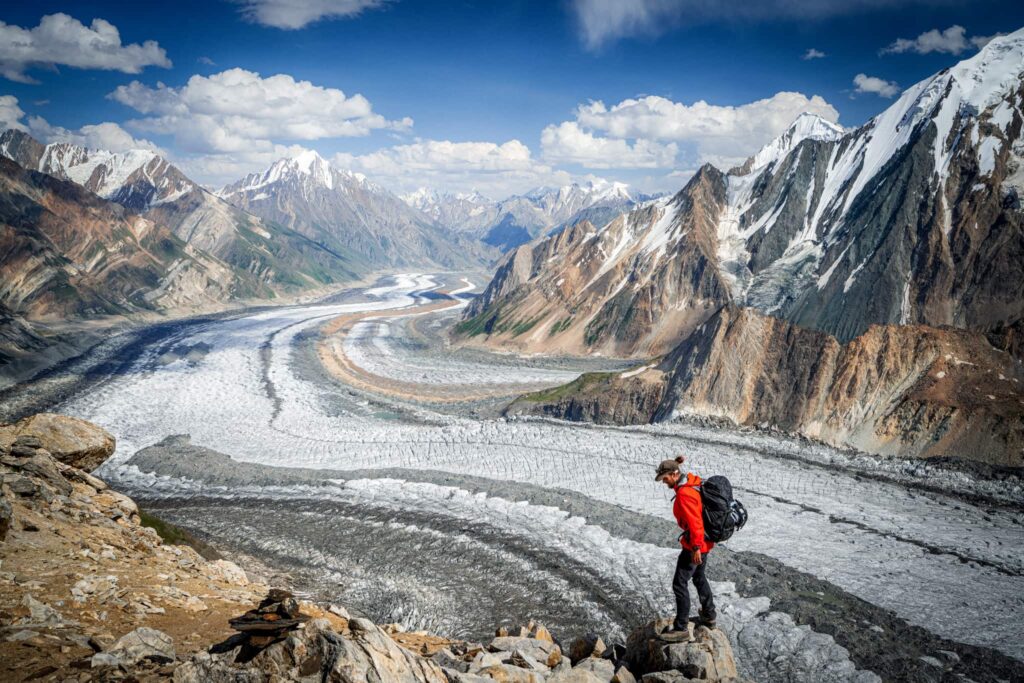
The Most Important Part of Your Trekking Fitness Journey: Go for some Hikes!
In our opinion, there is not a gym machine in the world that gets your legs as “mountain-ready” as hiking does. There will be no avoiding it: to properly train for this adventure, you will do some regular hiking. Since you signed up for a hiking trip with us, this should not be too much of a chore!
You should try to do hikes that offer some significant elevation gain and loss so that you can train your body for what conditions will be like in Pakistan, Nepal, etc.
“Flat” is not a word known in the Karakoram or Himalayas.
These simple exercises combined with hiking will prepare you for the up and down hills found on our treks:
1). Step Downs
2). Elevated heel squats
3). Calf Raises
4). Lunges with Weight
5). Stability and Balance
6). Core Strength Exercises like sit-ups, etc
7). Squats
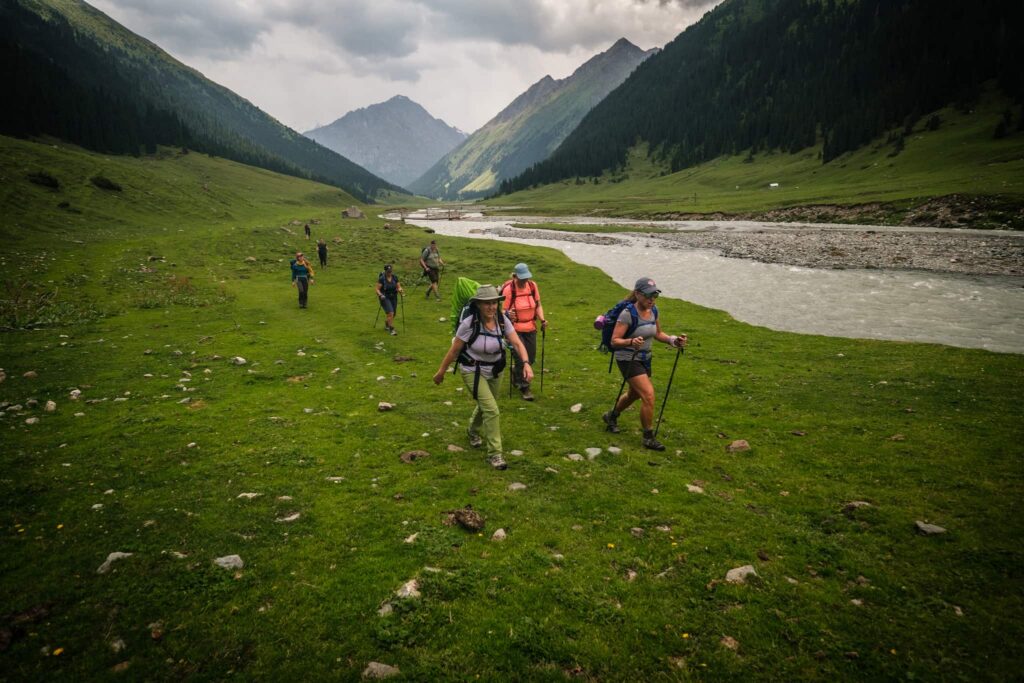
Building a Training Program for Trekking Fitness
There is no one right way to train but here is a proven formula that others have used to achieve an ideal trekking fitness. A combination of targeted strength training and hiking is a pretty simple recipe for success. Find what works for you and experiment with different things until you get your personal program dialed in.
Base Phase Training:
Initiate your training regimen with stretching exercises followed by 30 to 45-minute sessions, five days a week. As you progress, extend your workout duration gradually, aiming for 45 minutes to an hour without breaks. Tailor your training to suit your trekking aspirations, gradually building up to a solid hour with a sustained intensity before advancing. Introduce light backpack weight midway through this phase, adjusting it based on the demands of your chosen trek. Hike on the weekends.
Build Phase Training:
Transitioning into the build phase, each workout serves a more targeted purpose aligned with your trekking goals. Elevate the intensity by progressively increasing the weight on the stair master or elliptical bike to enhance your weekly stress load. You should be aiming to do a 3-5 hour hike 1-2 days a week at this point.
Peak Phase Training:
As you approach the peak phase, maintain a consistent routine with endurance, strength, and cardio sessions on the stair master or elliptical bike. Incorporate one or two short, high-intensity workouts to boost aerobic capacity and prepare your body for altitude challenges. These workouts aim to enhance your lactic threshold, enabling sustained performance. Incrementally increase backpack weight to enhance challenge, prioritizing resistance over speed.
Here is a sample 16-week training program for you to target:
Trekking Fitness: Weeks 1 - 4
Start slow and develop consistency. Try to hike 1-2 days out of the week if your schedule permits.
| Monday | Leg strength | Options: Squats, leg presses, elliptical, Stairmaster, or elliptical bike | 45 minutes |
| Tuesday | Active rest + mobility | Stretching, low-intensity leg workouts, yoga | 30 minutes |
| Wednesday | Cardio + legs | Elliptical bike with some intensity and/or walk for 1 hour. | 30-40 minutes + 1 hour |
| Thursday | Leg strength | Options: Squats, leg presses, elliptical, Stairmaster, or elliptical bike | 30-40 minutes |
| Friday | Cardio + legs | Elliptical bike with some intensity and/or walk for 1 hour. | 30-40 minutes + 1 hour |
| Saturday | Hike | Choose a route with some elevation gain | 4-5 hours |
| Sunday | Rest day | Walk the dog 🙂 |
Trekking Fitness: Weeks 5 - 9
Maintain and develop what you have built on. Try to hike 2 days out of the week if your schedule permits.
| Monday | Leg strength + walk | Squats, leg presses, elliptical, Stairmaster, or elliptical bike | 45 minutes + 45-minute walk |
| Tuesday | Active rest + mobility | Stretching, low-intensity leg workouts, yoga | 30 minutes |
| Wednesday | Cardio + legs | Elliptical bike with some intensity and/or walk for 1 hour. | 30-40 minutes + 1 hour |
| Thursday | Leg strength + walk | Squats, leg presses, elliptical, Stairmaster, or elliptical bike | 45 minutes + 45-minute walk |
| Friday | Cardio + legs | Elliptical bike with some intensity and/or walk for 1 hour. | 30-40 minutes + 1 hour |
| Saturday | Hike | Choose a route with more elevation gain | 4-5 hours |
| Sunday | Rest day | ||
Trekking Fitness: Weeks 10 - 14
Maintain and develop what you have built on. Increase difficulty or duration when possible. Try to hike 2 days out of the week if your schedule permits.
| Monday | Leg strength + walk | Squats, leg presses, elliptical, Stairmaster, or elliptical bike | 1 hour + 45 minute walk |
| Tuesday | Active rest + mobility | Stretching, low-intensity leg workouts, yoga | 30 minutes |
| Wednesday | Cardio + legs | Elliptical bike with some intensity and/or walk for 1 hour. | 30-40 minutes + 1 hour |
| Thursday | Leg strength + walk | Squats, leg presses, elliptical, Stairmaster, or elliptical bike | 1 hour + 45 minute walk |
| Friday | Cardio + legs | Elliptical bike with some intensity and/or walk for 1 hour. | 30-40 minutes + 1 hour |
| Saturday | Hike | Choose a route with more elevation gain | 4-5 hours |
| Sunday | Rest day or optional hike |
Trekking Fitness: Weeks 15 - 16
The final stretch until the trip starts. This is where all the work you have put in thus far pays off. Taper off intensity levels a few weeks before the trip starts, but keep everything going. Use more caution than normal when doing physical activities. Now is not the time to have an injury!
| Monday | Leg strength + walk | Squats, leg presses, elliptical, Stairmaster, or elliptical bike | 1 hour + 45 minute walk |
| Tuesday | Active rest + mobility | Stretching, low-intensity leg workouts, yoga | 30 minutes |
| Wednesday | Carido + legs | Elliptical bike with some intensity and/or walk for 1 hour. | 30-40 minutes + 1 hour |
| Thursday | Leg strength + walk | Squats, leg presses, elliptical, Stairmaster, or elliptical bike | 1 hour + 45 minute walk |
| Friday | Cardio + legs | Elliptical bike with some intensity and/or walk for 1 hour. | 30-40 minutes + 1 hour |
| Saturday | Hike | Choose a route with 1000 meters of incline | 4-5 hours |
| Sunday | Rest day or optional hike | ||
Try to Get to Altitude Before Our Big Trip
At some point before the trip, we highly recommend that you plan a quick weekend getaway to the closest mountain range near where you live. This can be the Rocky Mountains in USA, the Alps or the Pyrenees in Europe, the Scottish Highlands, New Zealand Alps, etc. The goal would be to target and/or sleep at 3500-4300 meters for a few days.
This trip to altitude will serve two purposes. You will get to see first hand to how your body is feeling being at altitude. If you do this trip a few weeks before the trip starts, then you will start the trip with some prior acclimatization, which will only benefit you.
I understand that in some countries, there is no convenient access to high-altitude environments (shout out Australia!).
Please note that a pre-trip visit to a high mountain range is not mandatory. If you can swing it you will get a real-time feel of how your fitness is coming along and direct feedback on how you feel above 4000 meters – which is the exact feedback you want before a big trekking trip.
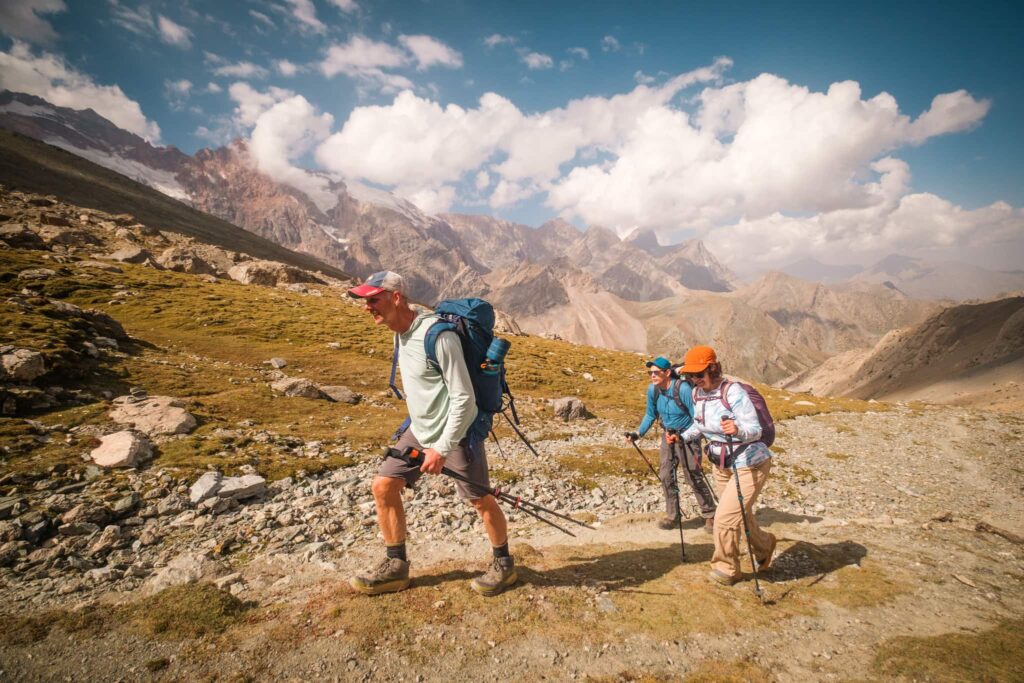
Building Trekking Fitness Endurance
On any extended trekking trip, you are in it for the long game.
Consistency is key to keeping your body happy after hours spent on a challenging trail. Finding your own pace that 1. keeps your heart rate stable and 2. can be sustained for long periods of time is pretty much the name of the game out here. Check out this article for information on how to train using heart rate monitoring.
We like to tell people to “hike their own hike” as much as possible. Your training at home before this trip needs to simulate the kind of demands your body will face in the mountains.
It is not common for people to start their training journey and easily be able to walk uphill for 5 hours with minimal breaks. You should be working towards this target though as much as possible.
Your “hike day” of the week should leave you feeling challenged and should give you some pretty good feedback as to where you are at and where you need to work towards.
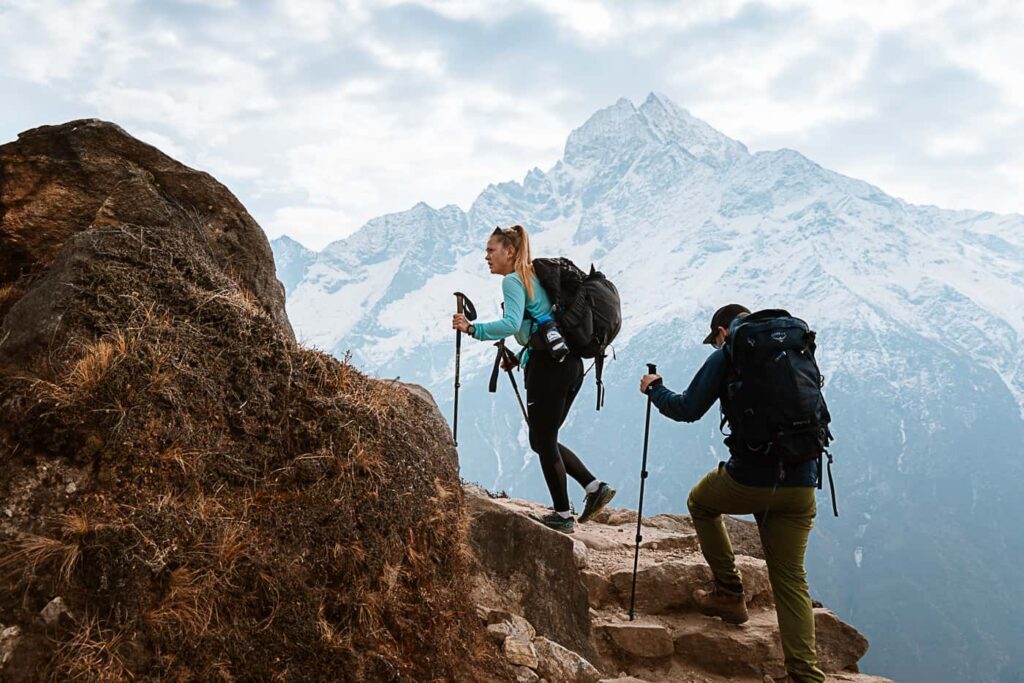
Consider Hiring a Personal Trainer
If time and budget permits, you can hire a personal fitness trainer who can help to determine your starting fitness level, the heart rate zones that you should be training in, and keep you on track for achieving your fitness goals.
If hiring a trainer for weekly sessions is not possible for you, we do suggest at least doing a one-time consultation with a fitness trainer who can provide you with many insights about your own fitness needs given your trekking objective.
The more you put into your training – and this includes external help – the better you will feel in the mountains when “game time” comes.
Prioritize Gut Health
Building your body up to a great level of trekking fitness, but neglecting your gut biotics is a kin to doing a tune up of your car but neglecting to put the wheels on before you start driving out of the mechanic.
In developing countries like Nepal and Pakistan, western trekkers can have issues with upset stomachs occasionally.
While there is no magical formula for avoiding some of these less-then-pleasant gastro issues – there are some things you can do to prepare your body for the microscopic belly demons that might try to affect your active vacation.
Starting a regimen of probiotics is a good place to start. We actually wrote a whole blog article about this topic which you can check out here.

Injury Prevention
We would be neglecting our duties here if we did not mention injuries and what they can potentially do for your trip aspirations… IE end them completely.
So you have done all of this work to prepare your body for the trip of a lifetime. You are ready to roll. But… 3 weeks out from the start date you break your arm playing football or tweak your ankle on an epic trail run. And heartbreak ensues…
The point being here is that without fail, every year we have clients get injured before the trip starts and they are unable to join us. Please don’t let this be you.
A few months out from your planned trip, you should cease doing any physical activity that could result in a major injury.
- Avoid contact sports like MMA, football, and rugby.
- Avoid trail running.
- Taper down road running
- Avoid powerlifting or other gym activities that carry high-risk for injury.
- Take care of yourself and watch where you step on challenging trail terrain.
- Use common sense when training and do not over do it to the point where you are doing more harm to your body than good.
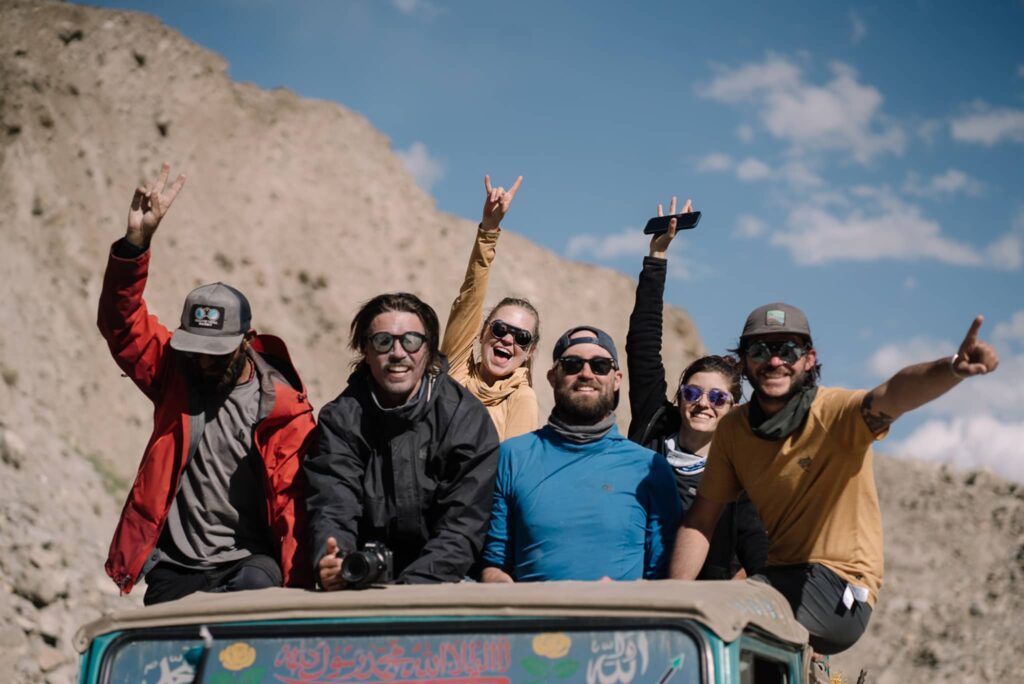
Wrap Up: Trekking Fitness Starts Now
Being able to experience the magic of the big mountains is a once-in-a-life time opportunity. You are now making your dreams a reality. Congratulations.
You have probably been saving money, planning for, and dreaming about this trip for a long time. Now, the trip is on the horizon and you are one step closer to being able to achieve your personal travel + adventure goals in the world’s most epic mountain ranges.
During these crucial months ahead, embrace the training and the process. The best things in life are never the easy options. Challenging yourself as much as possible, but enjoy the journey along the way.
Put in the work you need to do to have an excellent trekking holiday and you will only reap the rewards once you get out there.
Keep hiking, training, and we shall see you in the mountains in a few months!

